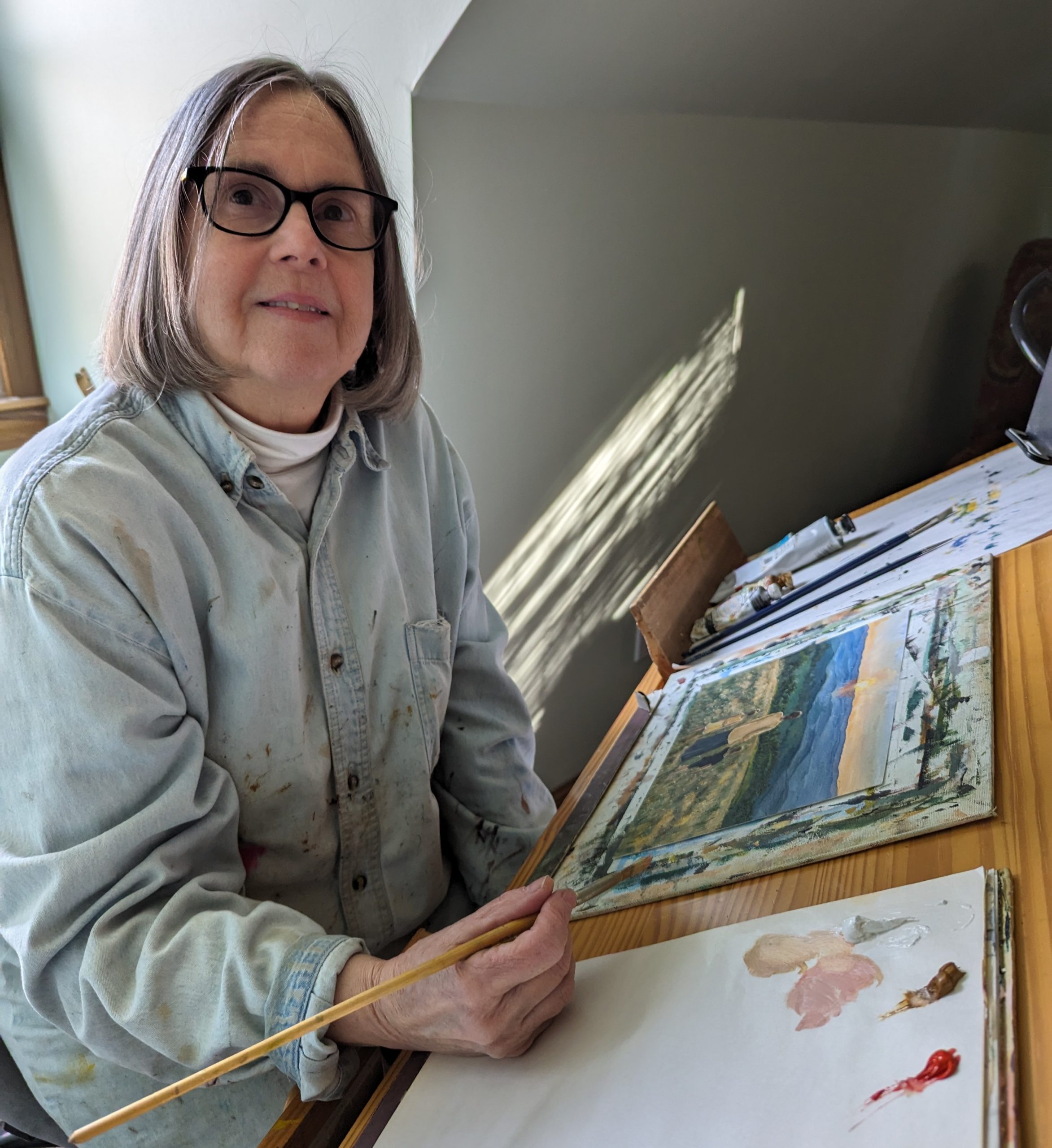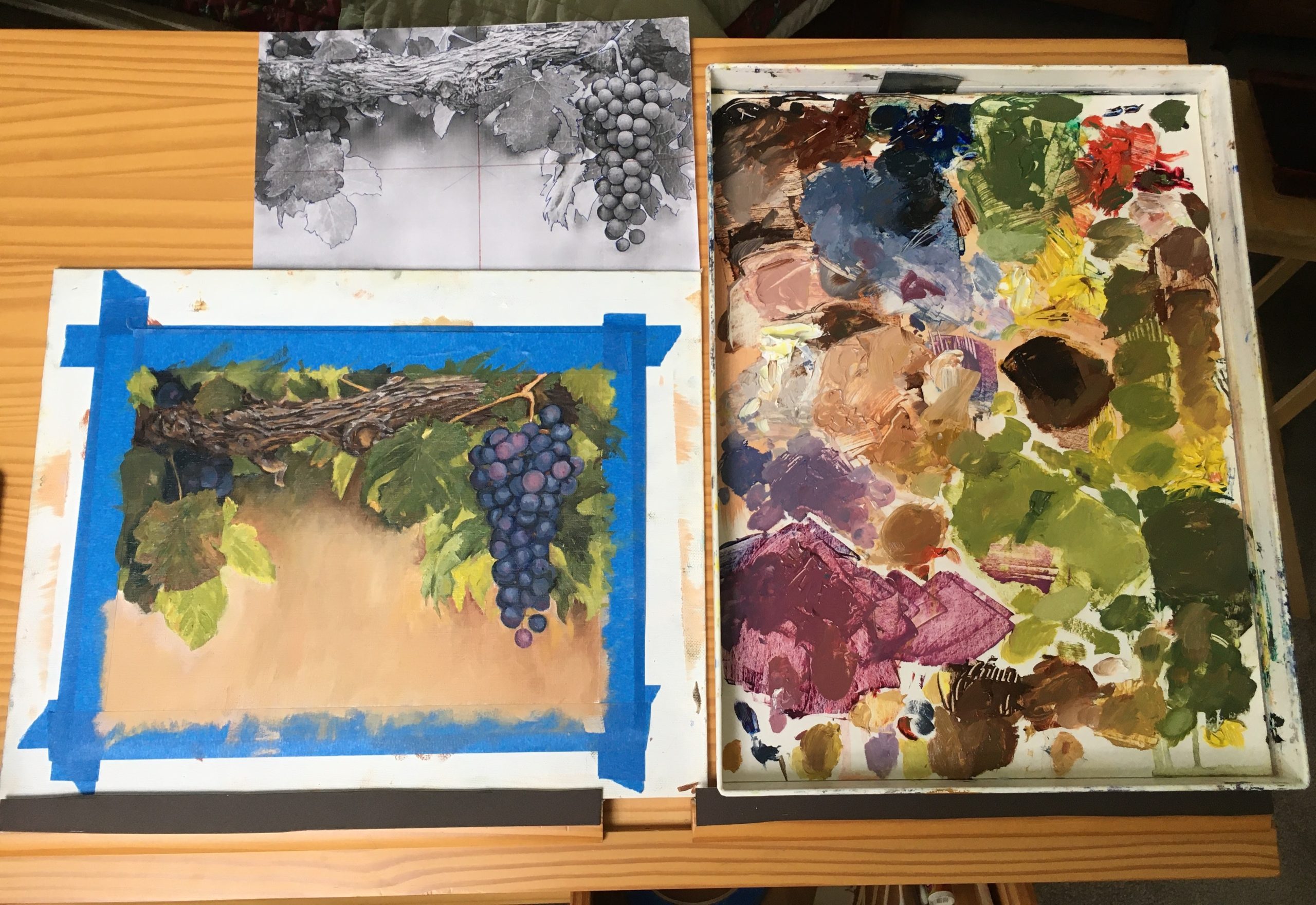Education Spotlight
Getting to Know Jesus: An Interview with Leslie Hall, the Creator of Jesus A-Z
Interview by Kirstie Skogerboe

"Sometimes unbelievers think Christianity is all about morality," says Leslie Hall. "That’s what I thought. But that isn’t what it’s about. It’s about Jesus." In collaboration with Ambassador Publications, Leslie has created a book to proclaim that truth to children. Read the story below about her own journey to loving Jesus and to both writing and painting this book.
Kirstie Skogerboe: Where did the idea for this book come from?
Leslie Hall: Probably over 30 years ago, I was visiting my mother-in-law in West Virginia. Her son was attending Liberty University at the time, and my mother-in-law would watch the chapel services. Once, when we were visiting, she said, “You’ve got to watch this sermon!” During the message, the pastor started talking about Jesus and said, “He’s the Alpha and Omega, He’s the Bread of Life. . .” He was listing all these great things about Jesus—mostly titles. And he was about halfway through when I thought, “He’s going through the alphabet.” I was so intrigued by that idea. At that time, I was having a lot of trouble sleeping, and even though I would pray, that didn’t help me go to sleep. I would try to recite Bible verses, but that took too much brain power. So I thought, I’m just going to start doing what that guy did. I couldn’t always remember specific titles, but if I couldn’t think of one, I would just think about anything about Jesus that started with that letter. I would get to about C and then I would go to sleep. Doing that gave me so much peace.
Afterwards, I really started learning the titles from the Bible and the verses they came from. I was teaching Sunday school and Bible club at the time, and I made big sheets of paper with the letters. (Some letters had so many words!) I realized how many titles Jesus had, and how many offices—He’s all-encompassing. Then I made coloring pages, and I printed these for a group of churches to use. There was a young man I was working with who was a wonderful Christian with young kids. I wanted to give him a set of the coloring pages, but I thought I would fill in the pages. I made two copies, one for him and one for me, and put them in pronged notebooks with clear covers. If you flipped the page, it was like a real book. I gave that to this young man.
That was probably in the late 90s or early 2000s. In December 2006, our house burned down, and that book was one of the things that burned. We were able to salvage a lot, and somehow I was able to get the coloring pages out, but I didn’t get that book I made. I was so disappointed that I didn’t save it from the fire. I had worked so hard on it. But in the long run, there was purpose in that, because I would never have done thisbook. When you experience a loss, you don’t always realize that there’s something good God can bring out of it.
I retired in 2022, so I had a lot of time on my hands. I thought, “I should do that book again.” I started to do it the same way I did the first time, but as I was doing it, I knew I could do my best work with oil paint. First, I had to check whether anyone done this before. I thought, “I’m not going to do this if it’s been done before because it’s going to be a lot of work.” I looked and looked, but I couldn’t find it online or anything. I started doing the paintings in oil, and they probably took me a year or so. After I got the paintings done, I scanned them and used Microsoft publisher to add the font and sent it in to Walmart to have books made. I made one for each family and one for my sister, my brother, my sister-in-law, one for me. I was thrilled with them. They really didn’t look professional, but a lot more professional than sheet protectors!
Skogerboe: What is one of the most memorable books from your childhood? Why do you think it was impactful for you?
Hall: There was a set of books called The Bible Story. It was ten turquoise blue volumes, and anyone from my generation would probably remember them. My mother read those to us every morning. I can’t remember how long she did that—every morning she would read a story from there. When we got older, we resented it and didn’t want to, but she insisted. If friends were there, she would read to them, too.
I was saved when I was twenty-one, so all the Bible knowledge I had came from those books. We didn’t go to church, but I knew the Old Testament stories. I didn’t introduce my own children to those books because, by that time, I knew about better books. So I cut them up because they had beautiful illustrations. When we were kids, we would just look at the pictures. There was a book recommended to me once, and it was theologically good, but there was only one picture of Noah’s ark. I think books need to have a lot of pictures to keep children interested.
Skogerboe: How can we encourage children to develop artistic skills and use them for God’s glory?
Hall: When they’re young, many children are free with art and take to it naturally. Expose them to all different types of media: painting, pottery, sculpture, crafts. I thought it was so frustrating that most kids’ watercolors are so watery. I let my kids use my own art supplies. It’s nice to use a red that’s really red!
Draw kids’ attention in daily life to what they see and what colors are in the world. Point things out: “Isn’t that really cool that this green is dark over here and then gets lighter and that it’s all God’s creation?”
Also, let them know what’s available. My daughters-in-law asked if I would teach art to my grandchildren. I noticed that they love to paint more than anything. It’s harder to get out the paints than the crayons, but I tried to let them paint whenever they wanted. Even though they’re young, you can teach them basic things about drawing. We did portraits. They’re capable of a lot more than we realize. Even if they’re only doing something with colors and lines, I think that’s helpful too—it’s expressionistic. Let them do whatever they’re interested in. Then if they get interested in more academic instruction, just give them the opportunity. My mother, when I was ten years old, just signed me up for an oil painting class. After that, oil was my choice of what I was comfortable with. But my mother did that for me. She saw I was interested in drawing and art, and I’ve always been thankful to her.
Skogerboe: In what ways do you recommend reading or studying this book?
Hall: The whole purpose in writing this book was to draw attention to Jesus and different aspects of Him. If you’re reading it to children, elaborate a lot. On the first page, start telling them about when God created the world, and that He’s eternal. You can talk about the beginning and the end. Then you read the next page: “The bread of life.” With a three-year-old, I wouldn’t elaborate on what that means, but in not long, she can comprehend that. There are a lot of things that kids can comprehend that we can’t. I think the Holy Spirit gives them understanding. As you keep reading, mention Bible stories along the way. When you get to “Resurrection,” you can talk about Jesus’ resurrection, Lazarus’, and ours.
I also think it would be a good idea for parents and teachers to learn all the verses. They’re so much easier to learn with the alphabet. For example, I learned that Psalm 119 is an acrostic—that’s something the Jews used a lot as a learning device. And there’s a lot more that can be done—this book is a springboard. A little goes a long way when it’s the Word. God can take even a little bit of knowledge use it in a mighty way. Parents and teachers, encourage kids to memorize the verses. We don’t expect as much out of kids as we used to. Kids are so smart, and memorizing helps so much. Really stress Bible verse memory. Memorizing Scripture is one of the best things a person can do.
When I was 21, these things were amazing to me. Kids who have grown up knowing this all their lives get used to it. But then you stop and think, “Wait a minute, He rose from the dead. Why isn’t everyone stopping and jumping up and down?” Try to look at Him with fresh eyes and think about what He says. When we get caught up too much in the world, we need to focus on who Jesus is. I hope that when unbelievers see this book, and children and adults, it will plant a seed in their mind and heart. God can use that to bring attention to who Jesus is. Sometimes unbelievers think Christianity is all about morality. That’s what I thought. But that isn’t what it’s about. It’s about Jesus.
Skogerboe: In what ways do you hope this book blesses children who read it?
Hall: I hope that it will be used to draw their minds and hearts to Jesus. I hope that God will use these verses to bring them to a deeper knowledge of His Son. And that it will help to equip them for what’s ahead for them. The country is growing more and more hostile to Christianity, so I think it will be harder and harder to take a stand for Christ. But when you know Him and when you love Him, even though it’s never easy, all the true knowledge that we have about Jesus will enhance our lives whether we face persecution or not.
Skogerboe: How did writing this book bless you?
Hall: This current form that it’s in blessed me because it brought me back to something that’s been ongoing in my life. When I needed to completely focus on Jesus, I would use those verses. But I hadn’t been doing it as much, and this book brought me back to doing it a lot. It blessed me to go over it again and think about each part, and to improve it.
The more you think about Jesus, your own inner life is going to be strengthened. It’s always going to help. No matter how inadequate we are or what failures we encounter, it still helps. Any bit of Him that’s in our lives, everything that is connected to Him is going to enrich our lives and make us stronger.
Jesus A-Z is available for purchase here.

